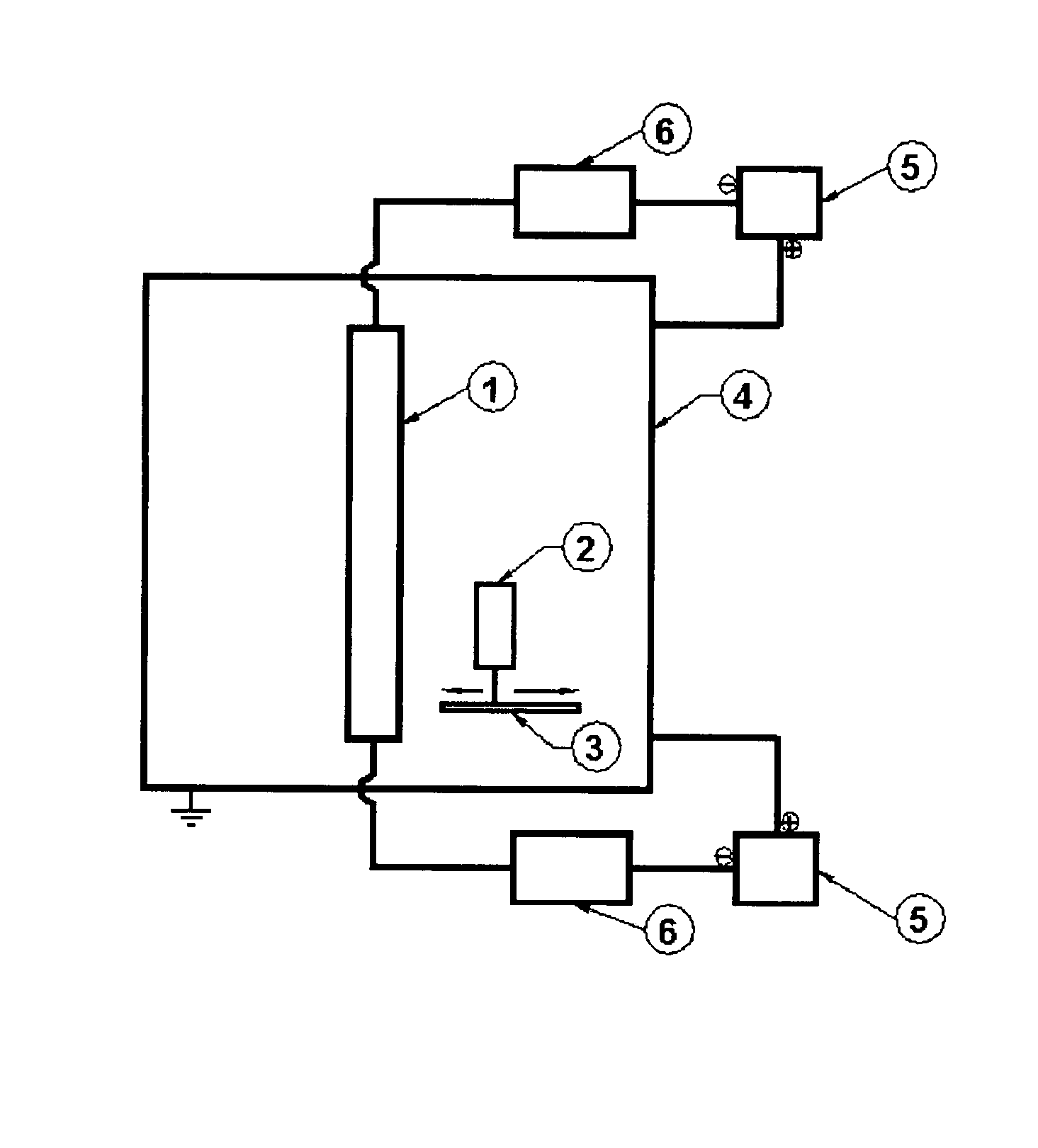Antimicrobial coating methods
a technology of cathodic arc and plasma deposition, which is applied in the direction of biocide, application, impression caps, etc., can solve the problems of limited methods, low anti-microbial performance, and general unreactiveness of most anti-microbial applications
- Summary
- Abstract
- Description
- Claims
- Application Information
AI Technical Summary
Benefits of technology
Problems solved by technology
Method used
Image
Examples
example 1
Silver Coated Catheter (Published Method)
[0075]A solver-coated catheter was prepared using the same procedure described in Example 6 of U.S. Pat. No. 5,454,886. Silver metal was deposited on 2.5 cm sections of a latex Foley catheter using magnetron sputtering. Operating conditions were performed as closely as possible based on the published example; i.e., the deposition rate was 200 A° per minute; the argon working gas pressure was 30 m Torr; and the ratio of temperature of substrate to melting point of the coating metal silver, T / Tm was 0.30. In this example the angles of incidence were variable since the substrate was round and rough; that is, the angles of incidence varied around the circumference and, on a finer scale, across the sides and tops of the numerous surface features. The anti-microbial effect on S. aureus was tested by a zone of inhibition, (Table 1).
[0076]
TABLE 1Reported Results5,454,886 patentExperimental ResultsZone of inhibition0.5 mmT / Tm0.38Zone of inhibition 16 ...
example 2
DC Magnetron Sputtered Antimicrobial Coating (Published Method)
[0078]The procedure of Example 7 in the U.S. Pat. No. 5,454,886 was followed. A Teflon coated latex Foley catheter was coated by DC magnetron sputtering 99.99% pure silver on the surface using the conditions used were: 0.5 kW power, 40 mTorr Ag / O2, 20 degrees C. initial substrate temperature, a cathode / anode distance of 100 mm, and a final film thickness of 300 nm. The working gases used were commercial Ag and 99 / 1 wt % Ag / O2.
[0079]The anti-microbial effect of the coating was tested by a zone of inhibition test. Mueller Hinton agar was dispensed into Petri dishes. The agar plates were allowed to surface dry prior to being inoculated with a lawn of Staphylococcus aureus ATCC#25923. The inoculant was prepared from Bactrol Discs (Difco, M.) which were reconstituted per the manufacturer's directions. Immediately after inoculation, the coated materials to be tested were placed on the surface of the agar. The dishes were incub...
example 3
Composite Silver Anti-Microbial Films (Published Method)
[0083]This example demonstrates a state of the art procedure for preparing a composite anti-microbial coating formed by reactive sputtering as found in Example 1 of the U.S. Pat. No. 5,454,886. Table 3 lists the published sputtering conditions and the conditions used for the comparison study compared with Experimental results obtained by following the steps in the published procedure.
[0084]
TABLE 3Sputtering ConditionsPublishedExperimentalTarget99.99% Ag99.99%Working gas80 / 20% Ar / O280 / 20% ArO2Working gas P2.5-50 mTorr40 mTorrPower0.1-2.5 kW0.5 kWSubstrate T−5 to 20° C.20° C.Anode / Cathode40 to 100 mm100 mmDistanceBase P−4 TorrZOI6-12 mm0 to 2 mm
PUM
| Property | Measurement | Unit |
|---|---|---|
| thickness | aaaaa | aaaaa |
| thickness | aaaaa | aaaaa |
| temperature | aaaaa | aaaaa |
Abstract
Description
Claims
Application Information
 Login to View More
Login to View More - R&D
- Intellectual Property
- Life Sciences
- Materials
- Tech Scout
- Unparalleled Data Quality
- Higher Quality Content
- 60% Fewer Hallucinations
Browse by: Latest US Patents, China's latest patents, Technical Efficacy Thesaurus, Application Domain, Technology Topic, Popular Technical Reports.
© 2025 PatSnap. All rights reserved.Legal|Privacy policy|Modern Slavery Act Transparency Statement|Sitemap|About US| Contact US: help@patsnap.com



